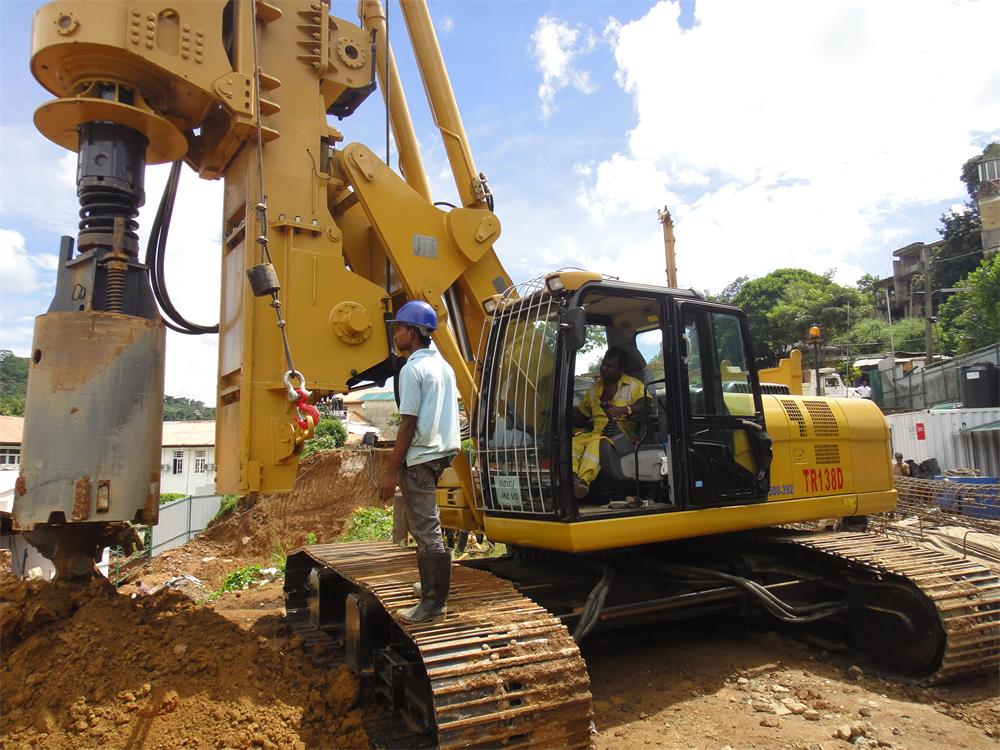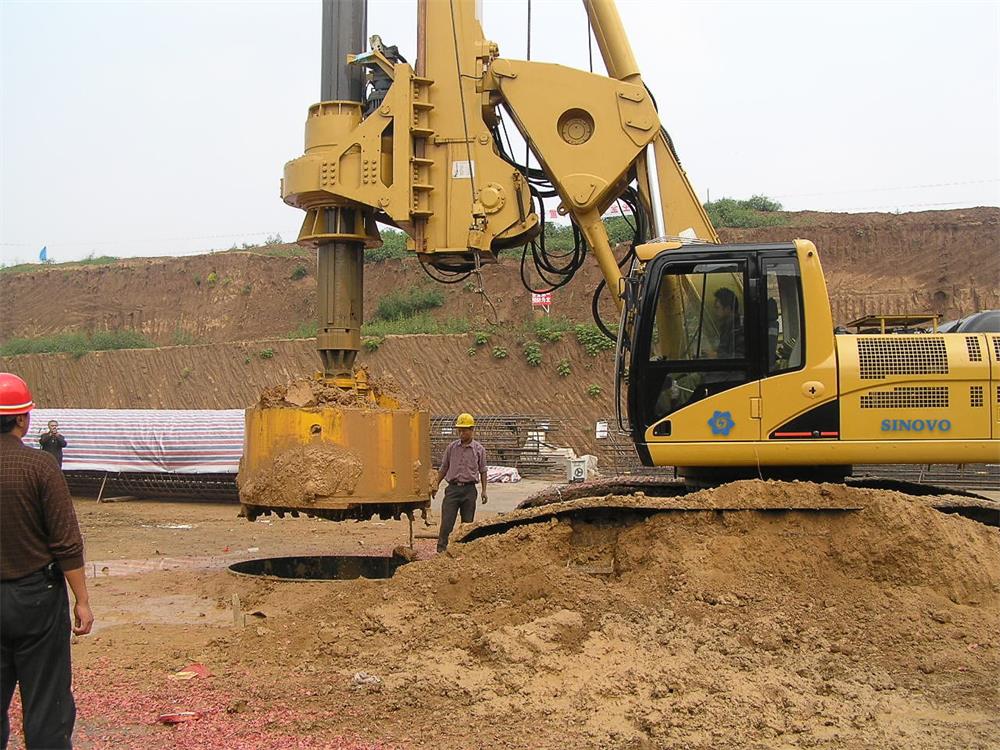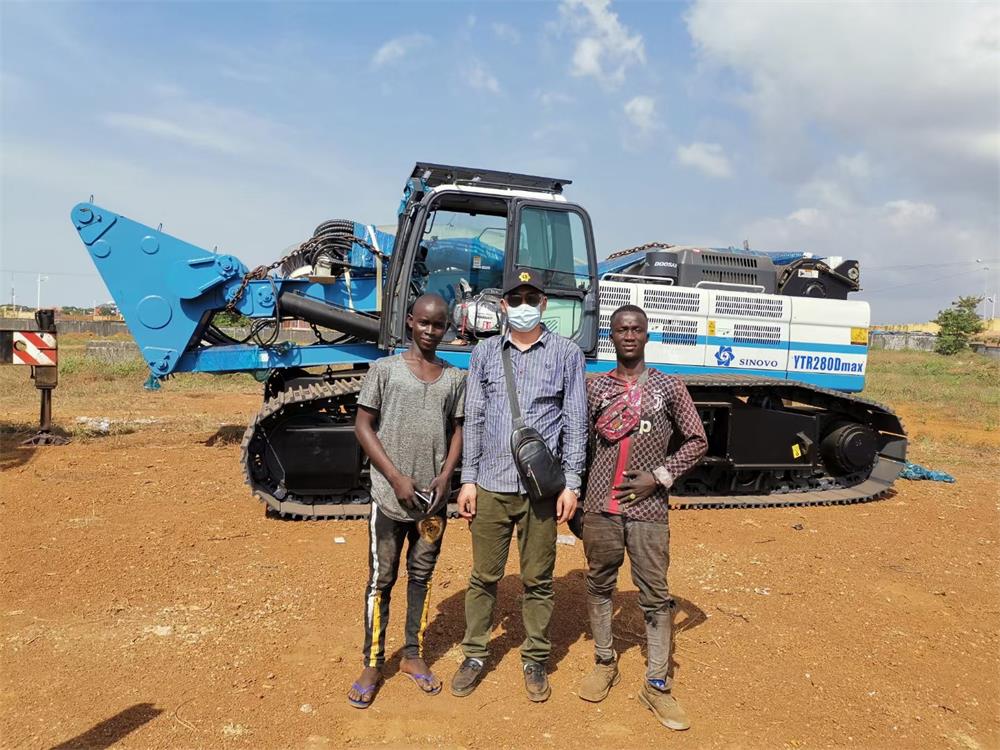Safety Operations of Rotary Drilling Rig Engines
1. Check before starting the engine
1) Check whether the safety belt is fastened, honk the horn, and confirm whether there are people around the working area and above and below the machine.
2) Check if each window glass or mirror provides a good view.
3) Check for dust or dirt around the engine, battery, and radiator. If there is any, remove it.
4) Check that the working device, cylinder, connecting rod, and hydraulic hose are free from crepe, excessive wear, or play. If an abnormality is found, change management is required.
5) Check the hydraulic device, hydraulic tank, hose, and joint for oil leakage.
6) Check the lower body (covering, sprocket, guide wheel, etc.) for damage, loss of integrity, loose bolts or oil leakage.
7) Check whether the meter display is normal, whether the work lights can work normally, and whether the electric circuit is open or open.
8) Check the coolant level, fuel level, hydraulic oil level, and engine oil level between the upper and lower limits.
9) In cold weather, it is necessary to check whether the coolant, fuel oil, hydraulic oil, storage electrolyte, oil and lubricating oil are frozen. If there is freezing, the engine must be unfrozen before starting the engine.
10) Check if the left control box is in the locked state.
11) Check the working condition, direction and position of the machine to provide relevant information for the operation.
2. Start the engine
Warning: When the engine start warning sign is prohibited on the lever, starting the engine is not allowed.
Warning: Before starting the engine, it must be confirmed that the safety lock handle is in a static position to prevent accidental contact with the lever during starting, causing the working device to suddenly move and cause an accident.
Warning: If the battery electrolyte freezes, do not charge the battery or start the engine with a different power source. There is a danger that the battery will catch fire. Before charging or using a different power supply engine, to dissolve the battery electrolyte, check whether the battery electrolyte is frozen and leaked before starting.
Before starting the engine, insert the key into the start switch. When turning to the ON position, check the display status of all indicator lights on the mathematical combination instrument. If there is an alarm, please carry out relevant troubleshooting before starting the engine.
A. Start the engine at normal temperature
The key is turned clockwise to the ON position. When the alarm indicator is off, the machine can start normally, and continue to the start position and keep it at this position for no more than 10 seconds. Release the key after the engine is shouldered and it will automatically return to on. Position. If the engine fails to start, it will be isolated for 30 seconds before restarting.
Note: The continuous starting time should not exceed 10 seconds; the interval between two starting times should not be less than 1 minute; if it cannot be started for three consecutive times, it should be checked whether the engine systems are normal.
Warning: 1) Do not turn the key while the engine is running. Because the engine will be damaged at this time.
2) Do not start the engine while dragging the rotary drilling rig.
3 ) The engine cannot be started by short-circuiting the starter motor circuit.
B. Start the engine with an auxiliary cable
Warning: When the battery electrolyte freezes, if you attempt to charge, or jump across the engine, the battery will explode. To prevent the battery electrolyte from freezing, keep it fully charged. If you do not follow these instructions, you or someone else will be hurt.
Warning: The battery will generate explosive gas. Note away from sparks, flames and fireworks. Keep charging when charging or using the battery in a confined area, work near the battery, and wear eye cover.
If the method of connecting the auxiliary cable is wrong, it will cause the battery to explode. Therefore, we must follow the following rules.
1)When the auxiliary cable is used for starting, two people are required to carry out the starting operation (one is sitting on the operator’s seat and the other is operating the battery)
2) When starting with another machine, do not allow the two machines to contact.
3) When connecting the auxiliary cable, turn the key witch of the normal machine and the faulty machine to the off position. Otherwise, when the power is turned on, the machine is in danger of moving.
4) When installing the auxiliary cable, be sure to connect the negative (-) battery at last; when removing the auxiliary cable, disconnect the negative (-) battery cable first.
5) When removing the auxiliary cable, take care not to allow the auxiliary cable clamps to contact each other or the machine.
6) When starting the engine with the auxiliary cable, always wear goggles and rubber gloves.
7) When connecting a normal machine to a faulty machine with an auxiliary cable, use a normal machine with the same battery voltage as the faulty machine.
3. After starting the engine
A. Engine warm up and machine warm up
The normal working temperature of hydraulic oil is 50℃- 80℃. The operation of hydraulic oil below 20℃ will damage the hydraulic components. Therefore, before starting work, if the oil temperature is lower than 20℃, the following preheating process must be used.
1) The engine is operated for 5 min at a speed greater than 200 rpm.
2) The engine throttle is placed in the middle position for 5 to 10 minutes.
3) At this speed, extend each cylinder several times, and operate the rotary and driving motors gently to preheat them. When the oil temperature reaches above 20℃, it can work. If necessary, extend or retract the bucket cylinder to the end of the stroke, and preheat the hydraulic oil with full load, but no more than 30 seconds at a time. It can be repeated until the oil temperature requirements are met.
B. Check after starting the engine
1) Check if each indicator is off.
2) Check for oil leakage (lubricating oil, fuel oil) and water leakage.
3) Check whether the sound, vibration, heating, smell and instrument of the machine are abnormal. If any abnormality is found, repair it immediately.
4. Turn off the engine
Note: If the engine is suddenly turned off before the engine cools, the engine life will be greatly reduced. Therefore, do not suddenly shut down the engine except in an emergency.
If the engine overheats, it does not suddenly shut down, but should run at medium speed to gradually cool the engine, then shut down the engine.
5. Check after turning off the engine
1) Inspect the working device, check the outside of the machine and the base to check for water leakage or oil leakage. If an abnormality is found, repair it.
2) Fill the fuel tank.
3) Check the engine room for paper scraps and debris. Remove paper dust and debris to avoid fire.
4) Remove the mud attached to the base.
Post time: Aug-29-2022




